You have no items in your shopping basket.
Dr Richard Dune
28-03-2025
Has E-Learning in health and social care finally come of age?
Image by bialasiewicz via Envato Elements
From clunky clicks to AI-driven compliance: Two decades of digital transformation in training
In today’s world of immersive digital learning and AI-powered compliance platforms, it’s easy to forget just how far we’ve come. For those who’ve walked this journey, navigating frustrating early systems, advocating for blended learning models, and pioneering digital training in regulated care environments, the transformation is nothing short of remarkable.
This article is part personal reflection and part strategic insight. It invites leaders across health and social care to consider the evolution of e-learning, how we got here, and what’s coming next.
Having worked across NHS hospitals, primary care, adult social care, and now in digital compliance innovation through LearnPac Systems and ComplyPlus™, I’ve seen e-learning go from fringe curiosity to mission-critical infrastructure.
The early 2000s - Clunky platforms and a ticking-the-box culture
I first encountered e-learning in NHS settings in the early 2000s, mostly through Moodle-based systems. The experience was, frankly, painful.
We’re talking about platforms that couldn’t load videos, crashed often, and required painful amounts of patience just to complete a basic module. On night shifts, I’d log into a desktop terminal, hoping the system wouldn’t freeze mid-course. Doing modules from home? Forget it. Bandwidth and compatibility made it almost impossible.
Back then, face-to-face training ruled. Annual statutory and mandatory training meant cramming hundreds of staff into a lecture hall. You’d rotate through the usual safety talks: fire, health and safety, and safeguarding with little variation year to year. The same jokes. The same slides. The objective wasn’t impact; it was attendance. Compliance was a tick-box exercise.
The reluctant rise of e-learning
By the early 2010s, staffing pressures and budget cuts forced organisations to rethink how they delivered training. E-learning seemed like a logical step, but the sector wasn’t ready. Only a few topics were deemed “safe” for digital: equality and diversity, infection prevention, fire safety, and so on. Anything practical or interactive stayed in-person.
Blended learning entered the scene. The theory could be done online; the practical followed in person. It sounded good, but the systems weren’t user-friendly, and most teams weren’t trained to deliver blended education effectively.
In social care, resistance ran even deeper. Many care home managers believed e-learning simply wasn’t “real” training. During early consultations, I’d hear: “E-learning? That’s just clicking through slides; it’s not effective.”
We knew they were wrong. But change takes time.
The COVID-19 catalyst - A sector transformed by necessity
The year 2020 changed everything! Suddenly, in-person training wasn’t just inconvenient; it was impossible. Local authorities, NHS trusts, schools, and care homes all had to pivot overnight. The demand for e-learning exploded.
Fortunately, we were ready. At LearnPac, we had already invested in scalable, blended training systems and had trialled Zoom-based facilitation well before it became the norm. We weren’t just selling courses; we were delivering integrated digital learning ecosystems. Within weeks, we converted one of our offices into a green-screen studio and began livestreaming to organisations nationwide.
Those that once resisted now embraced e-learning out of necessity. Some never looked back. We ran high-impact webinars, recorded live demos, and enabled interactive assessments. By the time restrictions began to ease, the value of digital learning had been proven at scale.
The new era - AI-powered learning and smart compliance
The evolution hasn’t stopped. Today, we’re shifting toward intelligent platforms that do more than deliver content. AI-driven Learning Management Systems (LMS) now:
- Personalise learning pathways based on job roles, prior knowledge, and CPD plans.
- Track real-time compliance and identify workforce training gaps.
- Automate reminders, feedback, assessments, and reporting.
- Integrate with ESR, rostering, and policy management systems.
- Support revalidation, inspections, and regulatory audits at the click of a button.
E-learning is no longer just about statutory and mandatory training. It’s now a strategic enabler of safer care, stronger governance, and organisational efficiency.
What we’ve learned - Reflections from the frontline
After two decades of leading digital transformation in health and care education, a few core truths stand out:
- Technology must serve people - Early platforms were built for IT departments, not learners. The real breakthrough came when systems started to mirror user needs: mobile-ready, simple, flexible, and responsive.
- Culture change is hard but possible - Change didn’t come from white papers or directives. It came from a crisis. The pandemic forced adoption, but the benefits of flexibility, accessibility, and scalability earned long-term buy-in.
- Not all learning should be digital - For emotional first aid, physical interventions, or clinical supervision, human interaction still matters. Digital training should be part of a broader blended learning strategy.
- Compliance is just the beginning - Good e-learning systems do more than tick boxes. They support governance, boost staff confidence, align with inspection frameworks, and embed continuous quality improvement.
What’s next for e-learning in health and social care?
Looking ahead, e-learning will continue to evolve, especially as AI, data analytics, and interoperability reshape service delivery. Here are four key trends we’re tracking:
- AI-powered CPD pathways
- Deeper integration with organisational systems
- Simulation and gamified learning
- Data-led improvement cycles.
Let’s discuss this in detail.
Leading the shift - How ComplyPlus™ was born
At The Mandatory Training Group, we didn’t just respond to the evolution, we helped shape it. Drawing on my experiences as a clinician, educator, and entrepreneur, we built ComplyPlus™, a next-generation, AI-powered health and social care compliance platform.
ComplyPlus™ goes far beyond a traditional LMS. It combines workforce training, policy management, CPD tracking, audit preparation, and real-time reporting in one unified solution. Whether you're preparing for CQC inspection, onboarding new staff, or embedding digital transformation, ComplyPlus™ provides the framework and flexibility to deliver at scale.
We designed it to address the sector’s unique pressures, tight margins, regulatory complexity, and limited resources and turn compliance into a lever for quality, safety, and improvement.
Final thoughts - From resistance to resilience
The evolution of e-learning in health and social care is a story of resistance turned into resilience and, now, into results. From Moodle-based frustration to intelligent compliance systems, passive content to AI-powered personalisation, and tick-box training to organisational transformation.
And yet, the journey isn’t over.
We still need to improve how organisations assess readiness, integrate legacy systems, and build inclusive digital strategies that serve learners, managers, service users, and families. Done right, e-learning can unlock safer care, stronger teams, and a culture of continuous improvement.
Call to action - Join the next chapter of innovation
At The Mandatory Training Group, we continue to lead innovation in workforce development, compliance, and governance through ComplyPlus™, built by experts, trusted by care providers, and designed for a digital-first NHS and social care system.
Learn more about ComplyPlus™ and how it’s reshaping workforce development, compliance, and quality assurance. Subscribe to the HSC Innovation Observatory for weekly insights on digital transformation, regulatory trends, and innovation in care.
Learn more about ComplyPlus™ and how it’s reshaping workforce development, compliance, and quality assurance. Subscribe to the HSC Innovation Observatory for weekly insights on digital transformation, regulatory trends, and innovation in care.
About the author
Dr Richard Dune
With over 25 years of experience, Dr Richard Dune has a rich background in the NHS, the private sector, academia, and research settings. His forte lies in clinical R&D, advancing healthcare tech, workforce development, and governance. His leadership ensures that regulatory compliance and innovation align seamlessly.

Related blog articles
View allContact us
Complete the form below to start your ComplyPlusTM trial and transform your regulatory compliance solutions.







